20 Game-Changing Queer Women to Celebrate Women's History Month
03/08/23
By continuing to use our site, you agree to our Privacy Policy and Terms of Use.
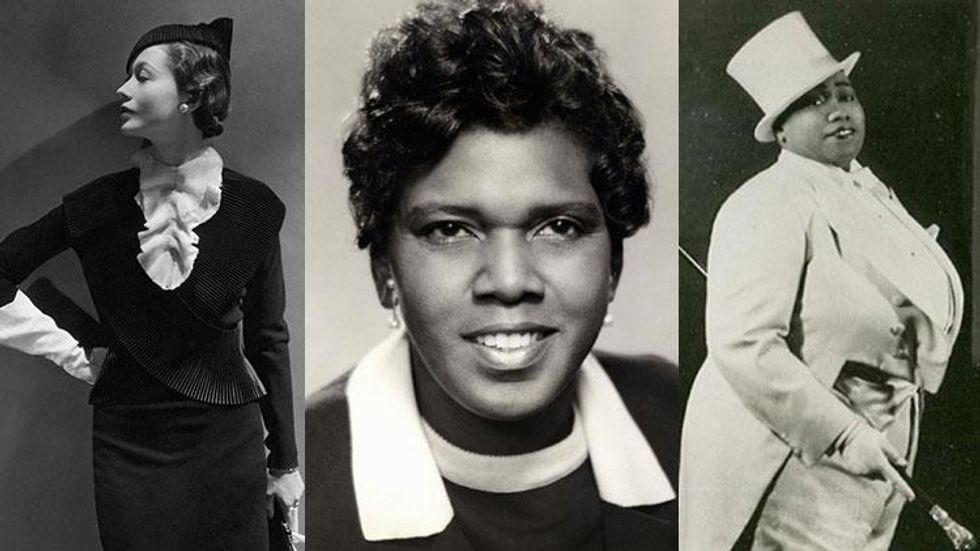
The roots of Women's History Month began in 1981 when Congress authorized a Women's History Week to begin on March 7, 1982. For the next five years, Congress authorized a week in March to be set aside as Women's History Week. Finally, the Women's History Project got involved and petitioned lawmakers makers to name an entire month to honor the achievements of women. March 1987 became the first Women's History Month.
For Women's History Month, we celebrate the accomplishments of queer women who moved the needle forward for generations to come through their activism, grit, and in many cases by just being unapologetically themselves in the face of sexism and anti-LGBTQ oppression.
These 20 people including Lorraine Hansberry, Lorena Hickok, and Dorothy Arzner all helped push toward wider acceptance of LGBTQ people through their contributions to their fields of expertise and through their legacies.
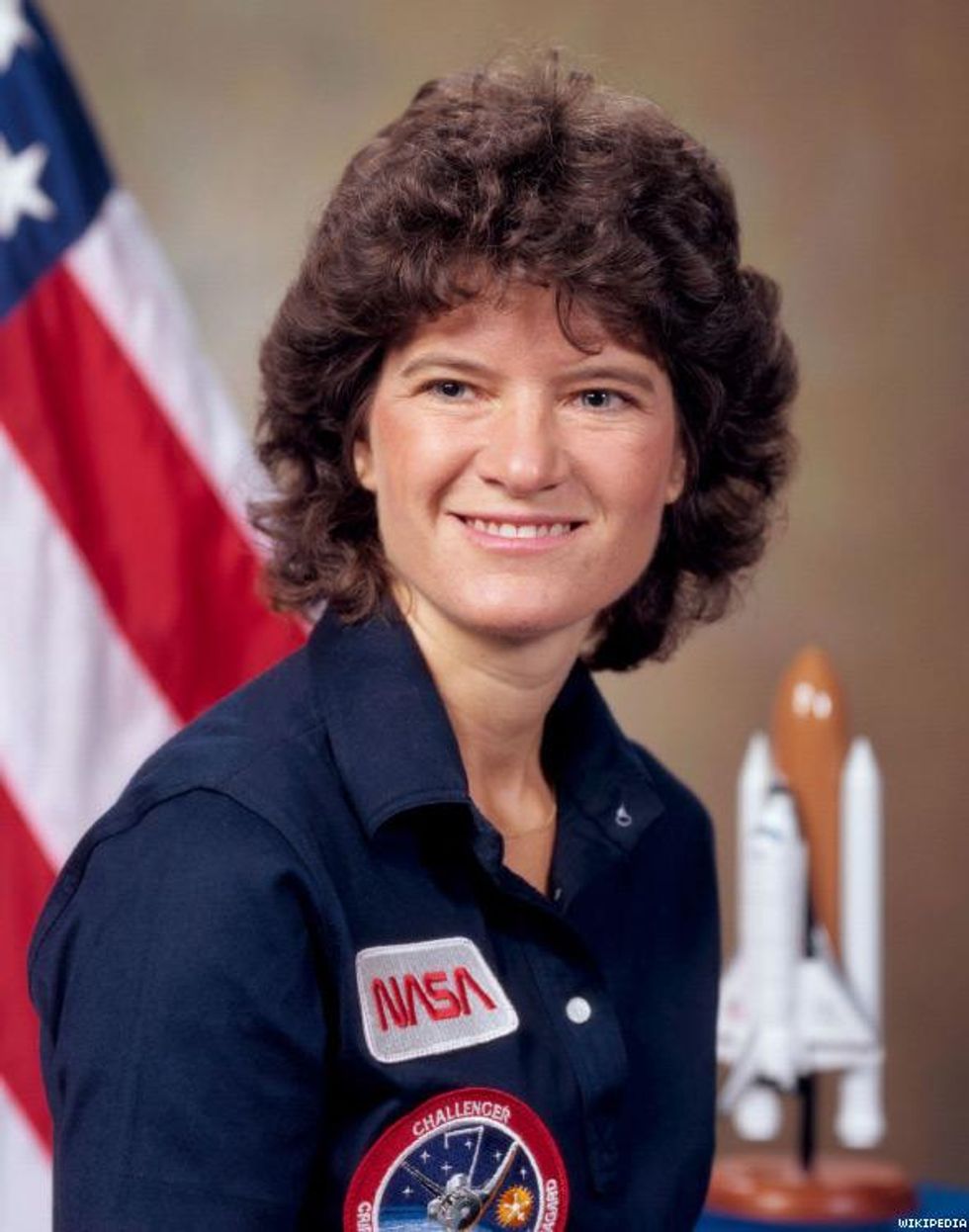
A physicist and astronaut, Sally Ride was the first American woman in space. As a physics student at Stanford, Ride answered a newspaper ad for female astronauts and became one of six women picked. She flew on the space shuttle in 1983 and in 1984, controlling the robotic arm, the tool that places satellites in space.
After she left NASA, Ride taught at the University of California, San Diego. Upon her death in 2012, her obituary revealed that she had been in a relationship with a woman, Tam O'Shaughnessy, for 27 years.
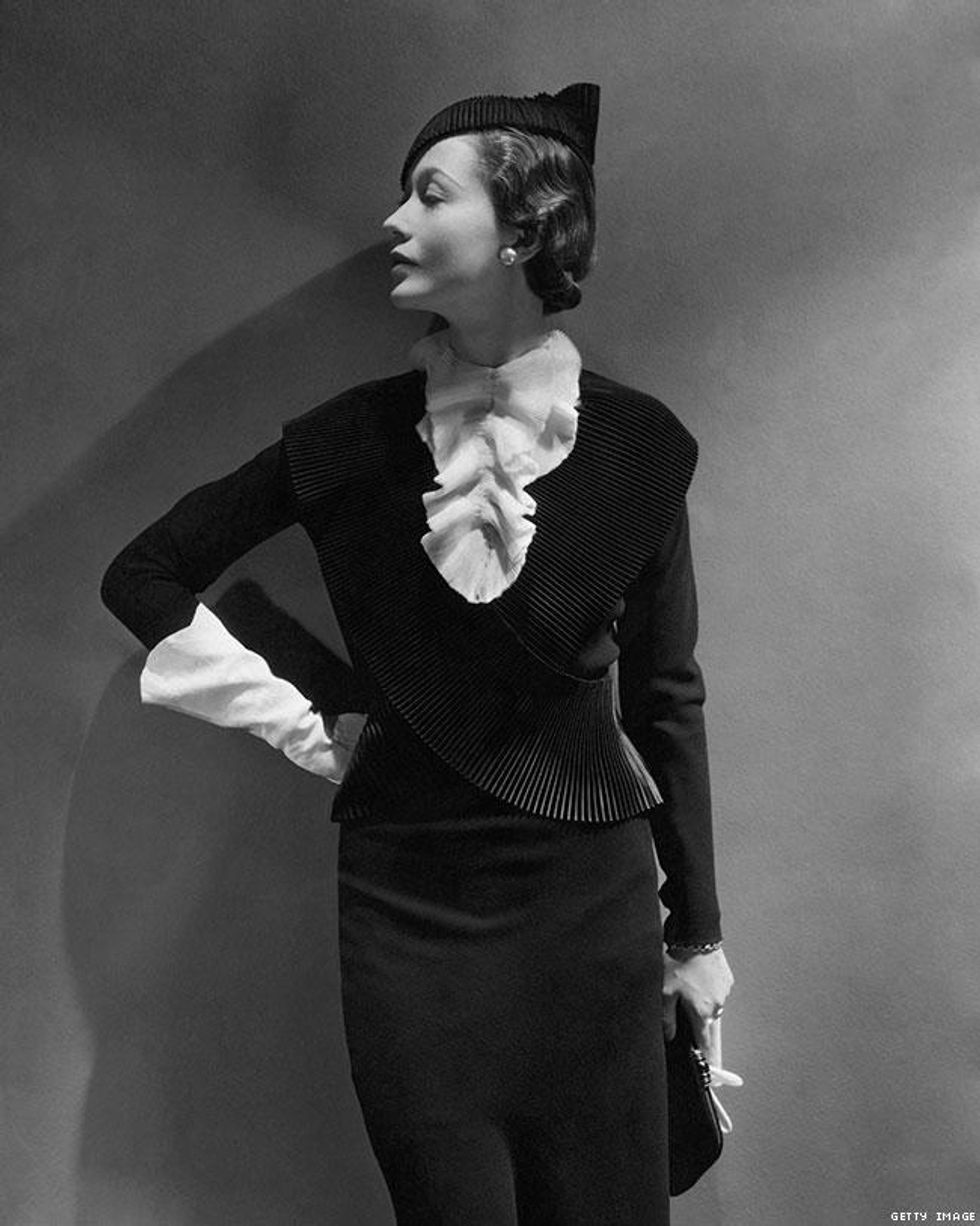
Born to Indonesian and Dutch parents in 1908, Toto Koopman flew in the face of racist attitudes of the time, embracing her mixed race heritage. The earliest known Vogue cover model, Koopman, who was bisexual, was also an in-house model for Coco Chanel. During World War II she fell in love with a man in the Italian Resistance and helped to carry out espionage missions. Following the war, she met German-born art dealer Erica Brausen. The pair would spend the rest of their lives together. They opened the Hanover Gallery in London, where they showed the work of Francis Bacon, Lucian Freud, Marcel Duchamp, and Henry Moore.
Later in life, Koopman became an archeologist and went out on several digs.
She died in 1991, having lived a long, rich life.
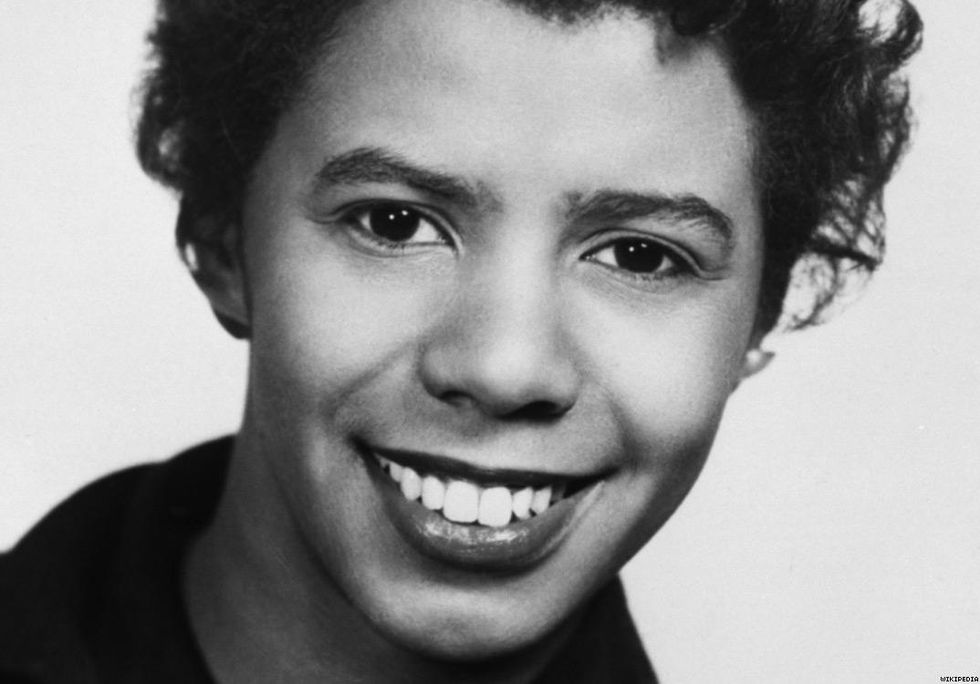
While Lorraine Hansberry is best known for her critically acclaimed play A Raisin in the Sun, she was also an activist and a writer who contributed to early queer publications including the lesbian-oriented The Ladder and the gay magazine One. She often tackled the intersection of feminism and LGBT rights, long before many thought to.
She was married to Robert Nemiroff, a marriage that was rumored to be mostly platonic, but she had affairs with women.
She died of pancreatic cancer when she was just 34.
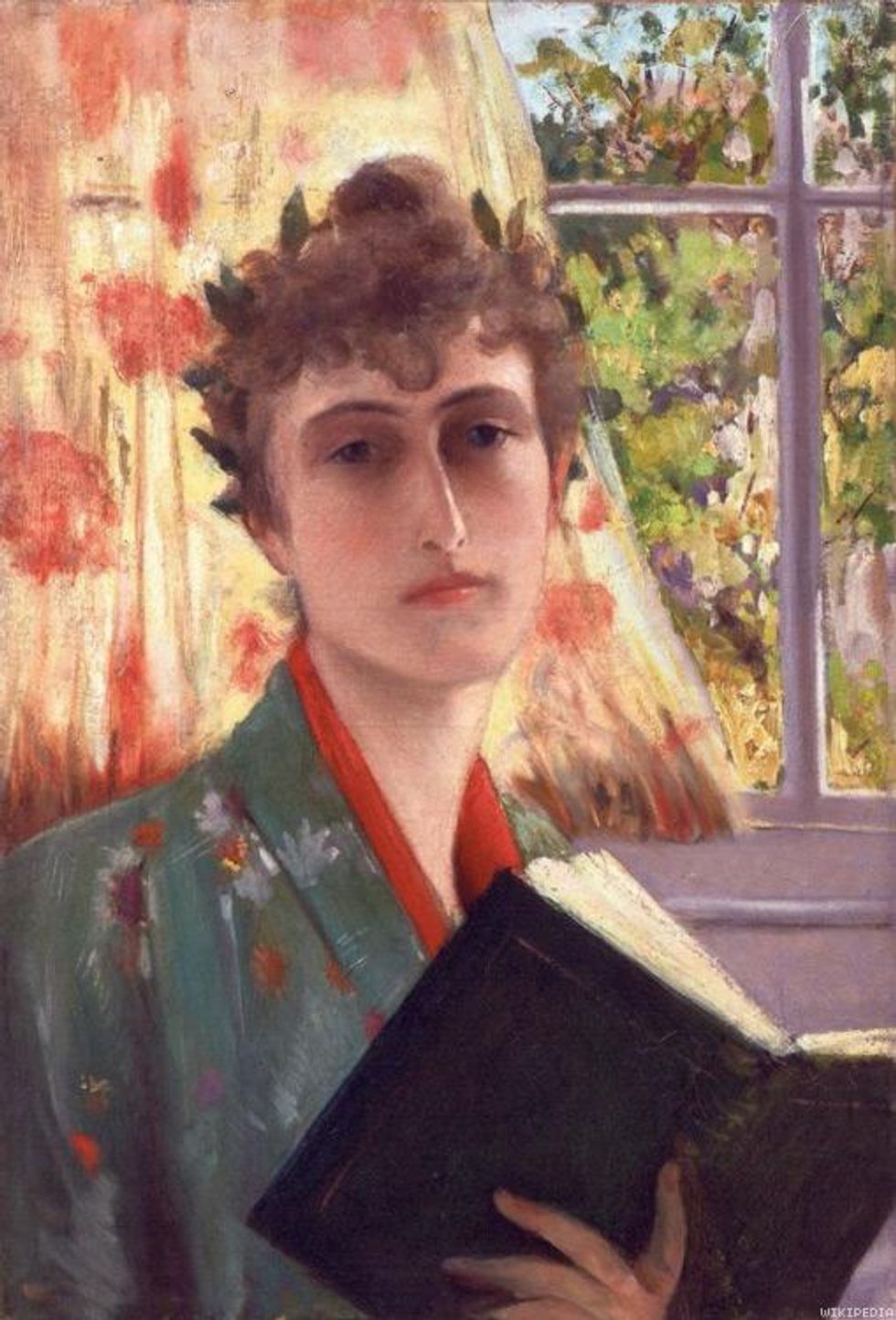
Heiress to the singer sewing machine empire, Winaretta Singer was a lifelong patron of the arts who hosted a salon in Paris from the late 1800s up through 1939, hosting artists including Claude Debussy, Igor Stravinsky, Cole Porter, Kurt Weill, Isadora Duncan, Colette, Claude Monet, Jean Cocteau, and Marcel Proust.
Beyond helping to fund the arts with donations to the Paris opera and symphony, she partnered with Marie Curie to send mobile radiology units -- in limousines -- to the front during World War I.
Singer was married twice to men, once to a European aristocrat with whom she did not consummate the marriage, and again to a prince, Edmond de Polignac, who was reportedly gay. Among her female lovers were painter Romaine Brooks, novelist Violet Trefusis, and composer-conductor Ethyl Smith.
She died in 1943.
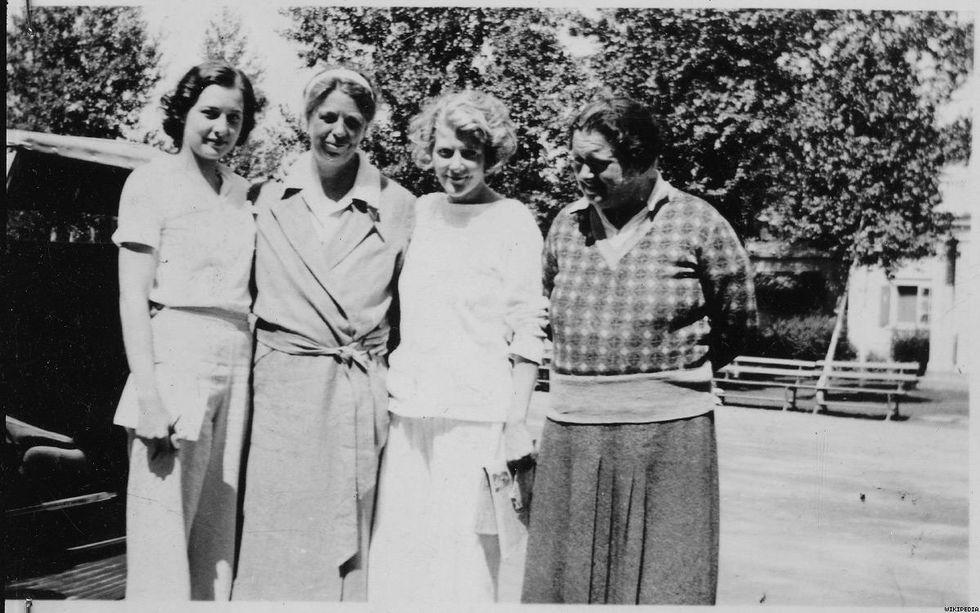
While Lorena Hickok was a renowned journalist of her time, she's likely best known for her proximity to Eleanor Roosevelt. Wisconsin-born, she began her work as a journalist at her small hometown paper but soon moved up and around, taking a job as society editor for the Milwaukee Sentinel before finding a foothold at the Minneapolis Tribune, where she wrote about sports and politics.
She joined the Associated Press in 1928, but she quit that job five years later when her friendship with Roosevelt had become so close that she felt she could no longer report about President Franklin D. Roosevelt and the first lady objectively. In 1940, Hickock was named executive secretary of the Democratic National Committee, and she moved into the White House. Over the years, Hickock and Eleanor Roosevelt exchanged many ardent letters.
She died in 1968.
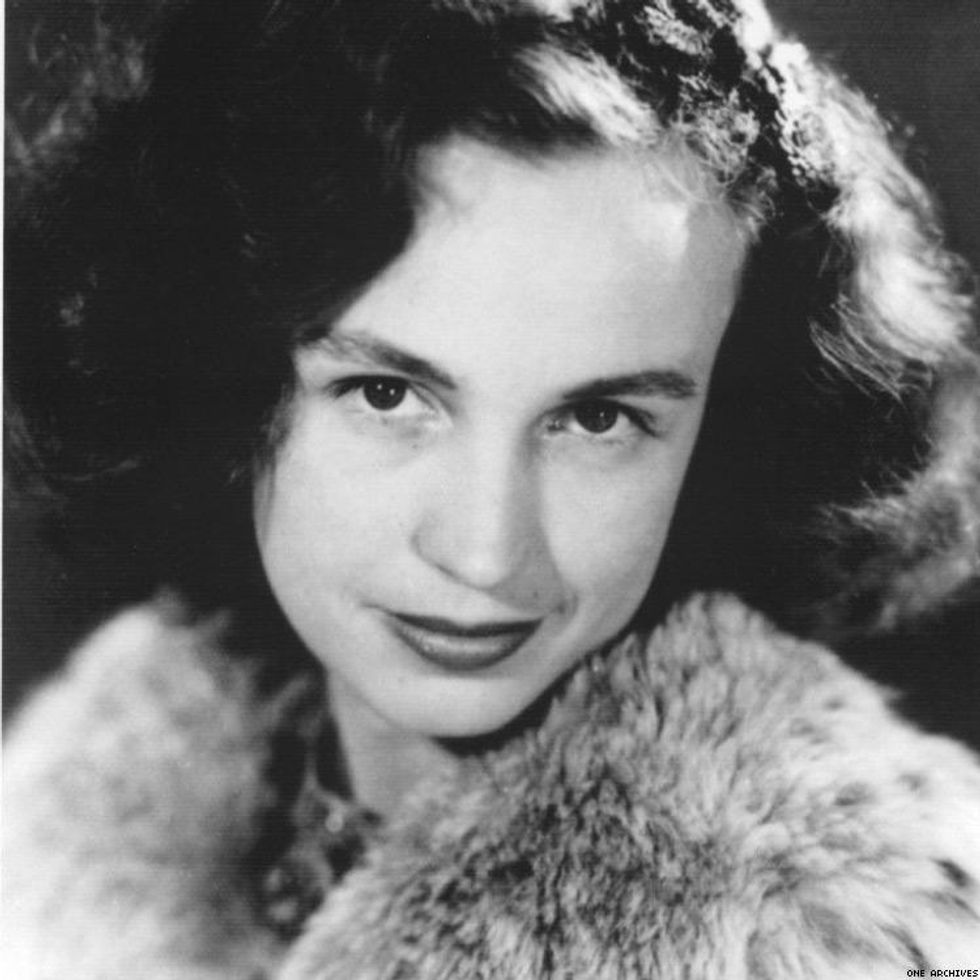
Also known as Lisa Ben, Edythe Eyde founded Vice Versa, the first lesbian publication in the U.S. A secretary at RKO studios in the late '40s, Eyde produced Vice Versa secretly at work and made copies with carbon paper. She only managed to produce nine issues of the publication, but she joined the lesbian organization Daughters of Bilitis and contributed to its publication The Ladder as Lisa Ben. Her contribution to LGBT journalism lives on with the Lisa Ben Award for Achievement in Features Coverage from NLGJA, the Association of LGBTQ Journalists.
Born in 1921, Eyde died in 2015.
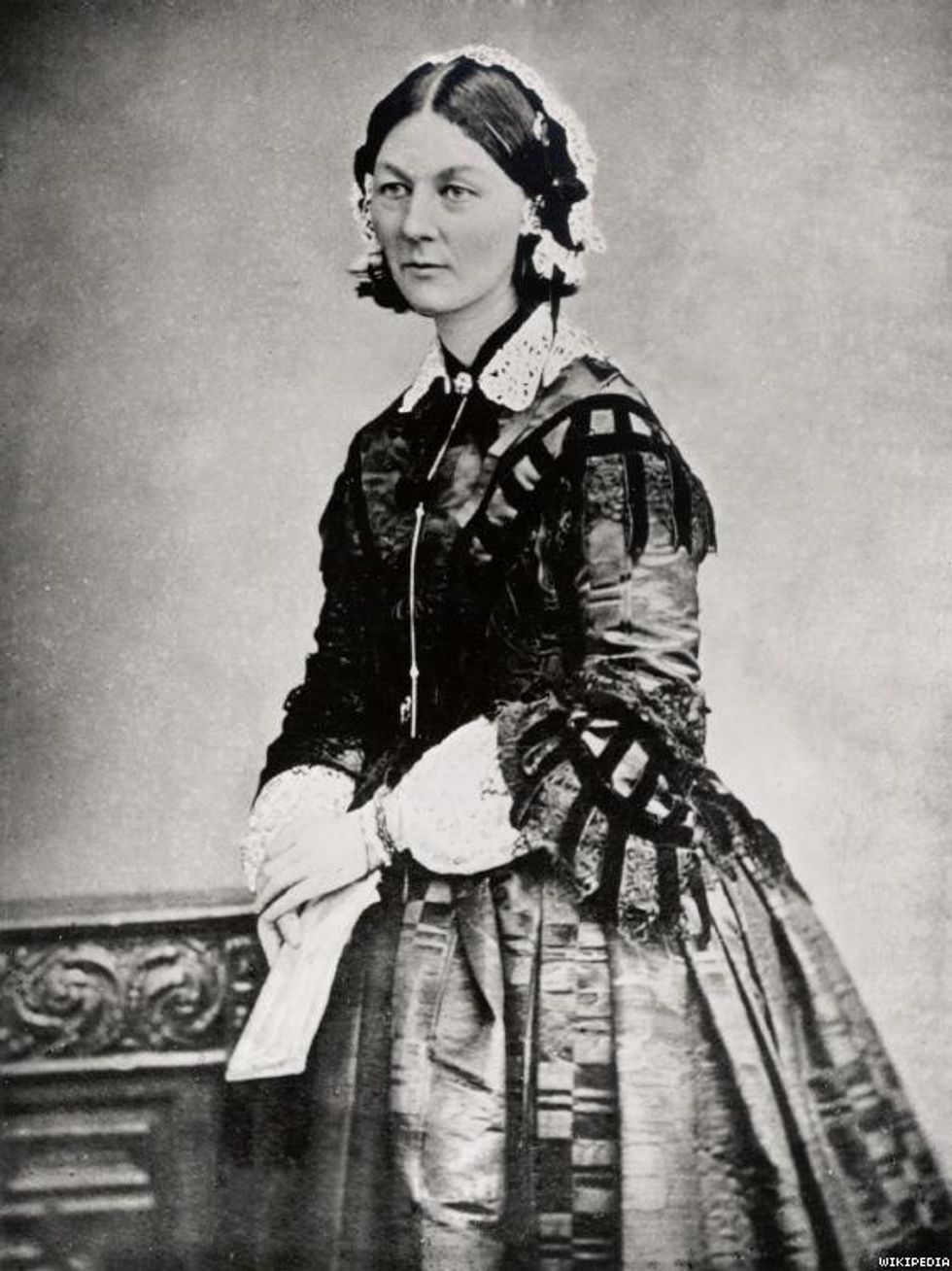
Likely the most famous nurse in all of history, Florence Nightingale was working as a nurse in London when she learned of deplorable conditions sick soldiers faced during the Crimean War in the 1850s. At the behest of Secretary of War Sidney Herbert, Nightingale was tasked with forming a team of nurses to help tend to the soldiers in Crimea. She pulled together a team of nearly 40 nurses and set off to Scutari, where she helped vastly improve the sanitary conditions of the infirmary there.
With money bestowed upon her for her heroism during the Crimean War by Queen Victoria, Nightingale founded St. Thomas' Hospital and the Nightingale Training School for Nurses.
Having contracted a bacterial infection while in Crimea, by age 38, Nightingale was primarily confined to her home, if not her bed.
Nightingale never married, but she was reportedly completely devoted to various women in her life, including her cousin Marianne Nicholson, about whom she wrote, "I have never loved but one person with passion in my life, and that was her," according to the book Superstars: Twelve Lesbians Who Changed the World.
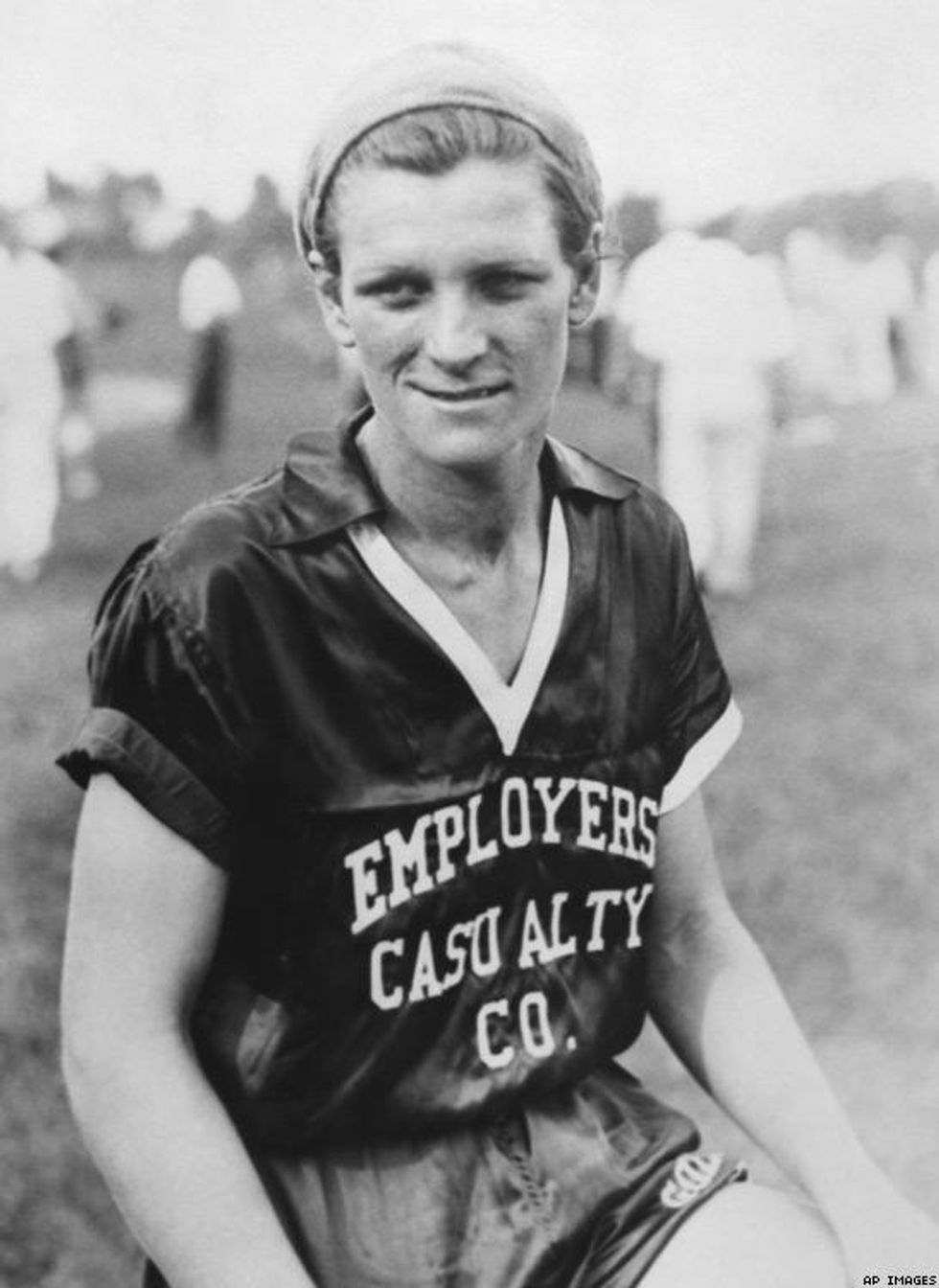
Mildred Didrikson, better known as Babe, was a renowned athlete in sports including basketball, track, softball, and tennis. At the 1932 Olympics, she broke records in the javelin, the 80-meter hurdles, and the high jump, earning her two gold medals and a silver.
She later began to focus on professional golf, becoming the first woman to compete in the PGA tournament. She went on to win 14 golf tournaments in 1946 and 1947 and became a founder of the LPGA.
Didrikson married wrestler George Zaharias in 1938. She became very close with and was rumored to be in a relationship with fellow golfer Betty Dodd. At 45, she died of colon cancer.
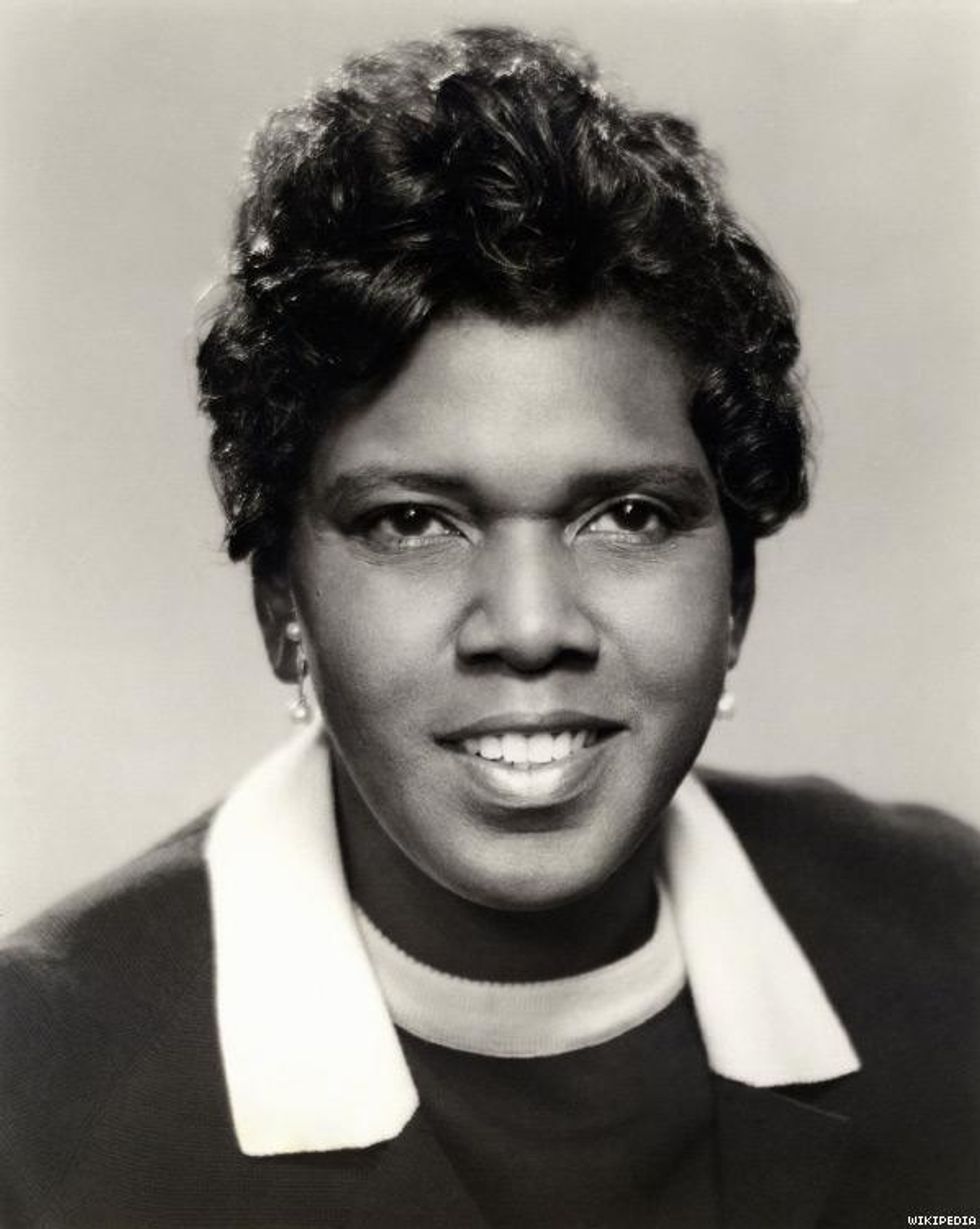
There were plenty of firsts with Barbara Jordan, an attorney who's best known for being the first African-American to be elected to the U.S. House of Representatives from Texas and the first post-Reconstruction African-American state senator.
Another first for Jordan include being the first woman and the first African-American to deliver a keynote address at the Democratic National Convention. She authored the first successful minimum wage bill in Texas and she served as Governor for the Day in 1972, becoming the first African-American woman to serve as the chief executive of any of the states.
In 1979 she moved away from politics and became a professor at the University of Texas at Austin. President Bill Clinton awarded her the Medal of Freedom in 1994. Two years later Jordan died, and it was revealed in her obituary that she had been in a more than 20-year relationship with her partner, Nancy Earl.
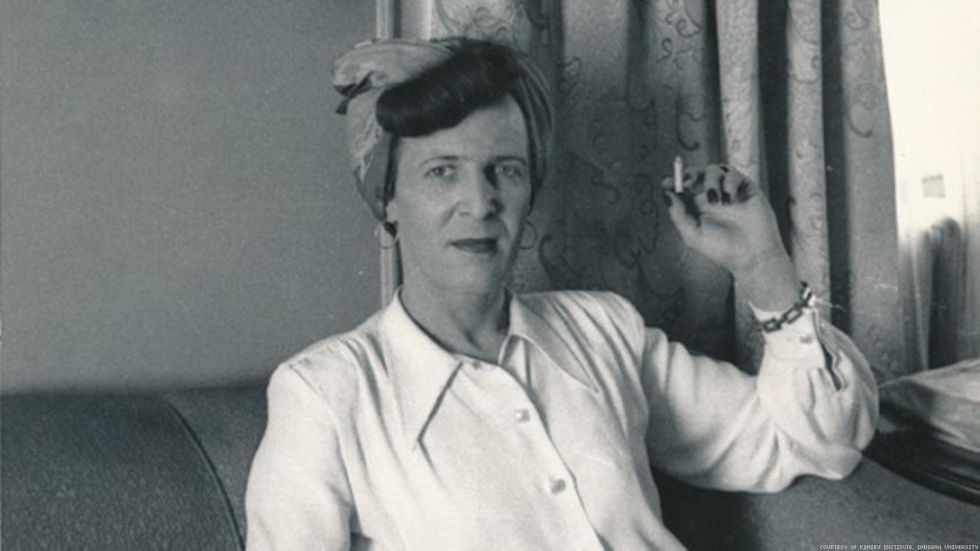
A building manager by trade in San Francisco in the 1940s, Louise Lawrence, a trans woman, was also an artist and activist who helped build a correspondence network for trans people that became the basis for the Transvestia magazine subscription list.
Lawrence also corresponded with Dr. Alfred Kinsey, introducing him to trans people for his studies.
She also lived with her female partner for many years before she died at 63.
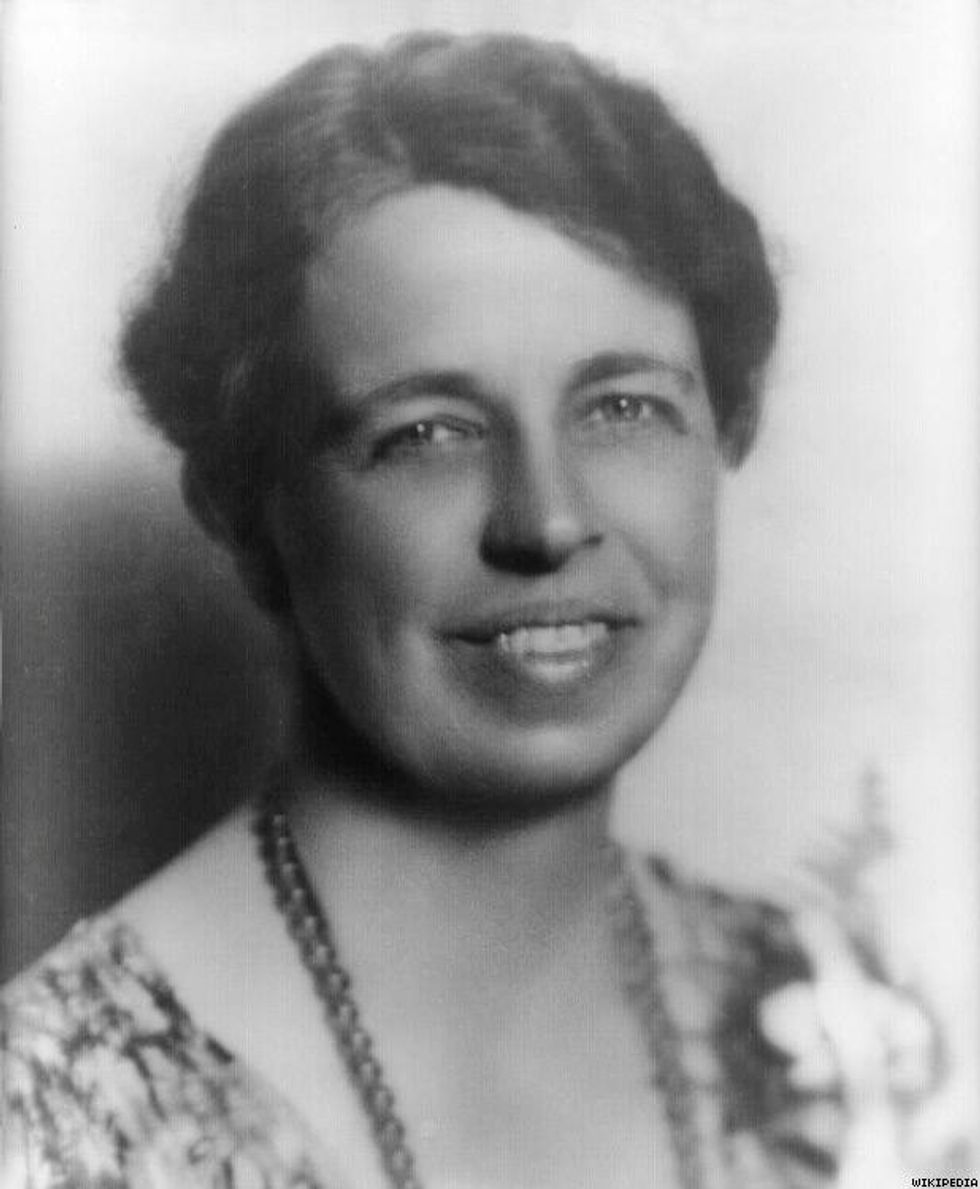
The longest-serving first lady in history, Eleanor Roosevelt worked to change the position during her husband Franklin D. Roosevelt's four terms in office. A politician and diplomat, as first lady, she performed the duty of playing hostess but also held press conferences and delivered radio addresses and lectures.
After Franklin's death in 1945, Roosevelt waited about a year before becoming the American spokesperson for the United Nations and carried on with her career until her death in 1962.
The first lady met AP journalist Lorena Hickok in the '30s and the pair maintained an ardent relationship for several years and over many love letters.
"Hick darling, All day I've thought of you & another birthday [when] I will be with you, & yet to-night you sounded so far away & formal, oh! I want to put my arms around you, I ache to hold you close. Your ring is a great comfort, I look at it & think she does love me, or I wouldn't be wearing it!" Roosevelt wrote to Hickok in 1933.

A poet and diarist, Alice Dunbar-Nelson, born in New Orleans in 1875 to mixed-race parents, often addressed her African-American, Native American, and Creole heritage in her work. She began her career as a teacher but published her first book, Violets and Other Tales, in 1895, when she was just 20.
Dunbar-Nelson married three men throughout her life, but her affairs with women were documented in her diaries. Later in life she returned to teaching and began a relationship with her school's principal, Edwina Kruse.
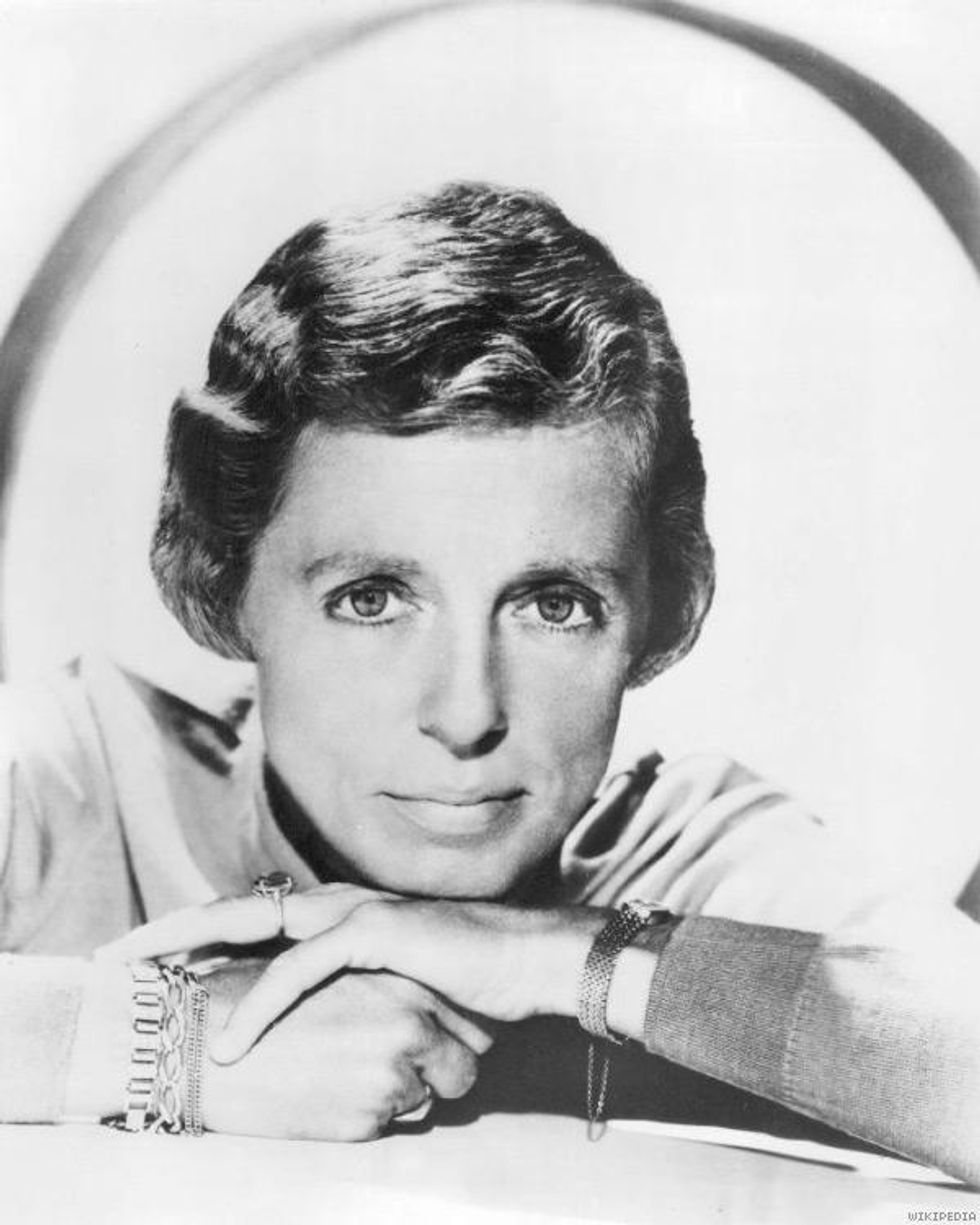
Fans of The Beverly Hillbillies will remember Kulp best as the staid banker's secretary Miss Jane Hathaway (an early crush for many a budding lesbian back in the day), but she was a character actress with a long career that extended into the era of The Love Boat and Fantasy Island. A journalism student in college, Kulp was a publicist for a time before she became an actress. Later in life, she tried her hand at politics, with an unsuccessful run for Congress in 1984. She was a Democrat running against a Republican in a heavily Republican district. That was not her swan song, however. She became an acting teacher at a Pennsylvania college.
Regarding her sexual orientation, Kulp told writer Boze Hadleigh, "As long as you reproduce my reply word for word, and the question, you may use it," she said. "I'd appreciate it if you'd let me phrase the question. There is more than one way. Here's how I would ask it: 'Do you think that opposites attract?' My own reply would be that I'm the other sort -- I find that birds of a feather flock together. That answers your question."
She died in 1991.
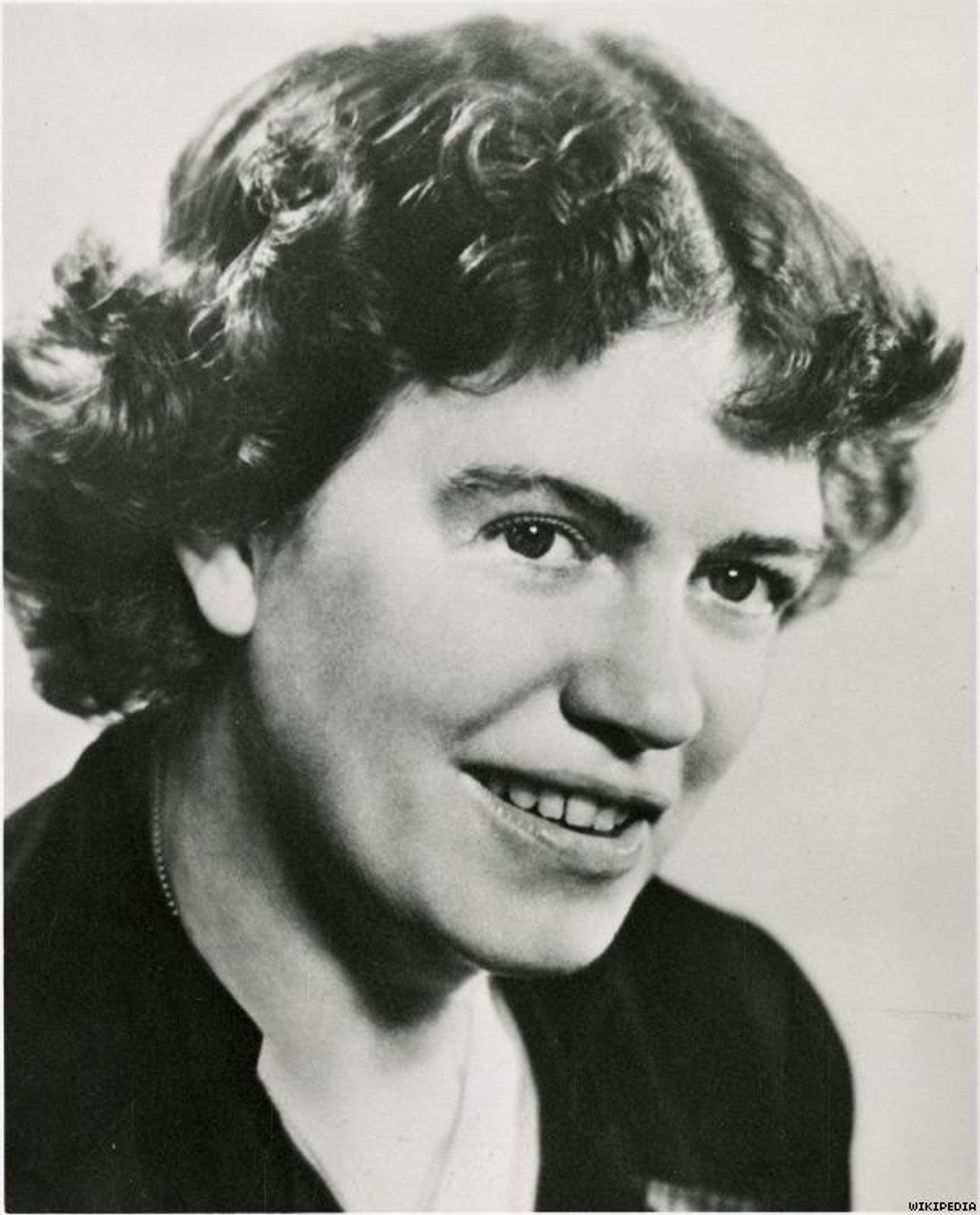
Cultural anthropologist Margaret Mead is renowned for her book Coming of Age in Samoa (1928), in which she researched adolescent girls in Samoa. Mead was also famous for field work in New Guinea, where she studied children and gender throughout the years. Some of that work is found in her book Growing Up in New Guinea.
When her work in the South Pacific was cut short because of World War II, Mead and her former professor at Columbia University, Ruth Benedict, founded the Institute for Intercultural Studies. Mead worked with the American Museum of Natural History for several years, and she authored or coauthored more than 20 books.
Mead married three times, but she spent the last part of her life with anthropologist Rhoda Metraux. The women were together from the mid-1950s until Mead's death in 1978.
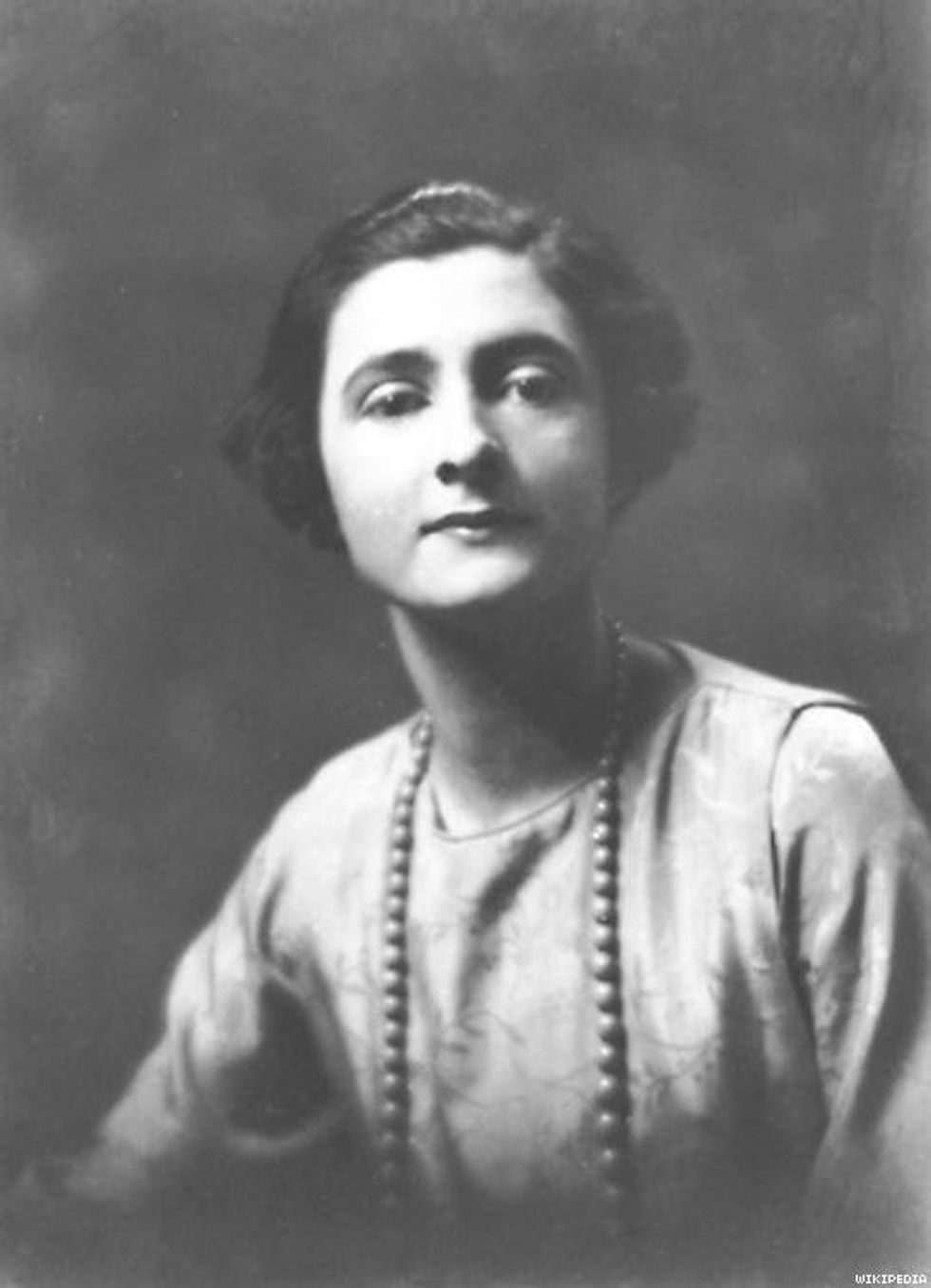
Infamous for her affairs with women, including Greta Garbo, Alla Nazimova, Marlene Dietrich, and Isadora Duncan, De Acosta was a poet, playwright, screenwriter, novelist, and costume designer. Born in New York City in 1893, the youngest of eight siblings, she dressed in male clothing for much of her life, including as a child.
In the 1930s she moved to Hollywood, where she and Garbo began their epic affair. De Acosta published her autobiography, Here Lies the Heart, in 1960.
She died in 1968.
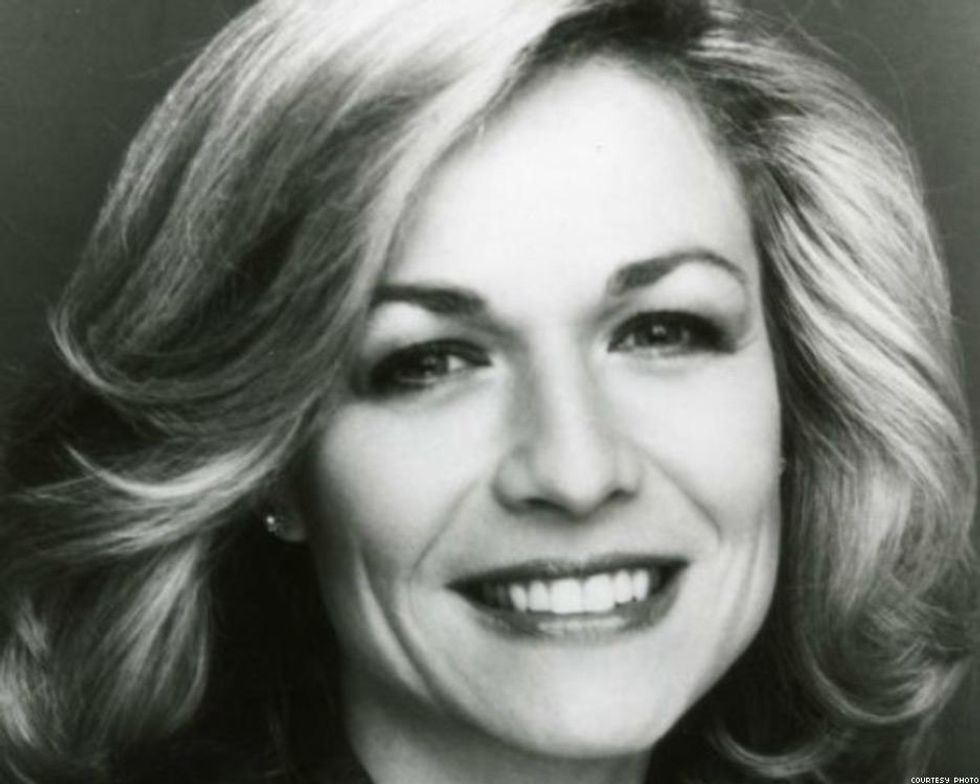
A pioneering TV journalist, Jessica Savitch began her career as the first female news reporter for KHOU in Houston, where she was promoted to Saturday night anchor within a year. She was also an anchor for Philadelphia's KYW before landing a prime gig as Senate correspondent at NBC. She won four Emmy awards during her career.
Biographer Gwenda Blair touched on Savitch's bisexuality in her book Almost Golden: Jessica Savitch and the Selling of Television News.
Savitch was killed in a car accident in 1983, when she was 35.
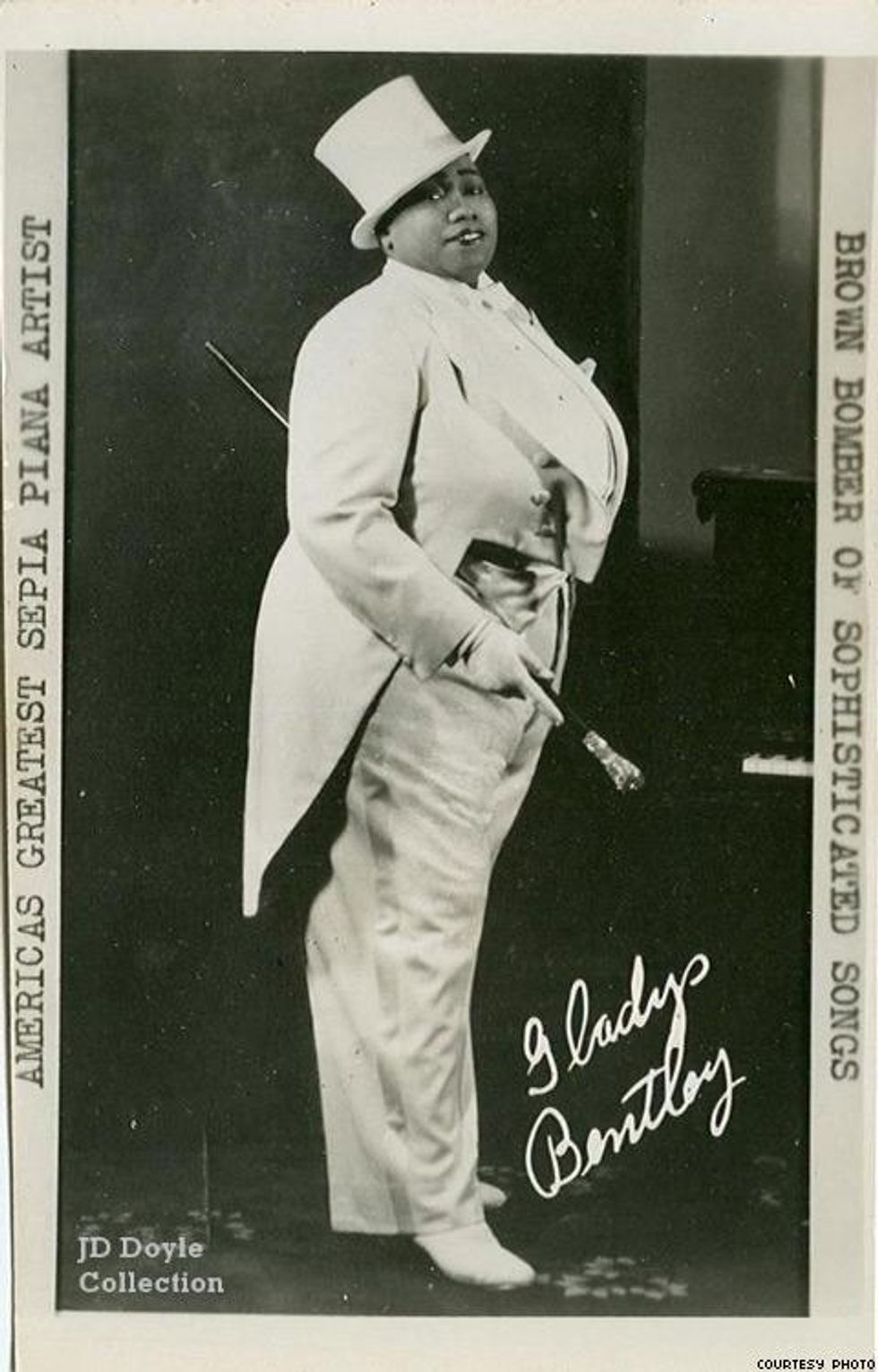
An out and proud, tuxedo-sporting blues singer, Gladys Bentley was one of the toasts of the Harlem Renaissance. Born in Philadelphia, Bentley found a measure of acceptance in the open, artistic environment in Harlem at age 16. She performed at clubs where she often improvised lyrics and flirted with women in the audience. At the close of the Renaissance in the late 1930s she moved to Los Angeles, where she continued to perform in gay clubs.
"From the time I can remember anything, I never wanted a man to touch me. ... Soon I began to feel more comfortable in boys' clothes than in dresses," Bentley once told Ebony magazine.
She died of the flu at age 53 in 1960.
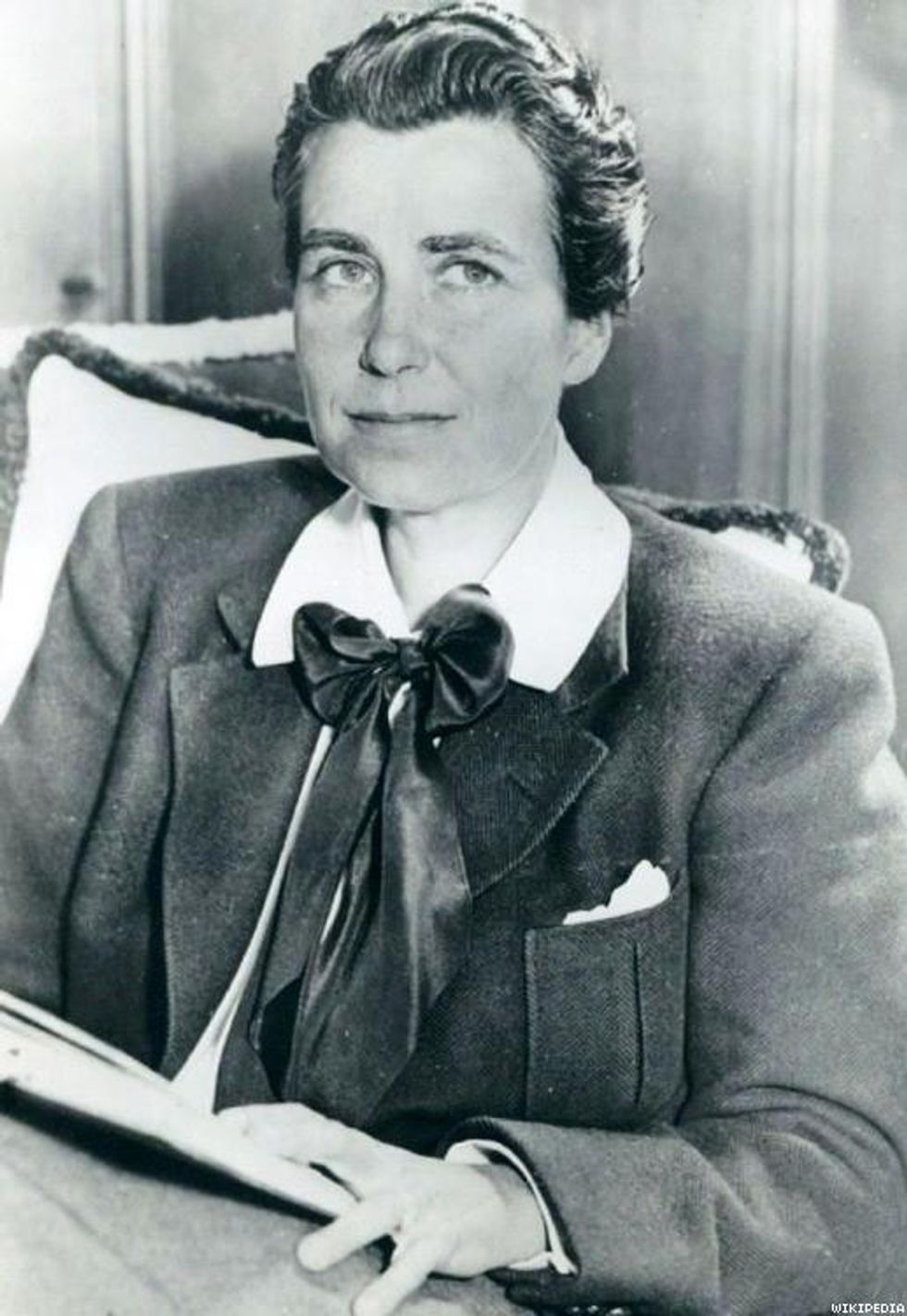
One of the few female directors in early Hollywood, Dorothy Arzner was also a pants-clad lesbian iconoclast who reportedly had affairs with women including Joan Crawford.
After driving an ambulance for a time in World War I, Arzner worked in Hollywood beginning as a script typist and becoming an editor.
Having successfully made the shift from the silent era to talkie films, Arzner directed her best-known work with Christopher Strong, which starred Katharine Hepburn as a no-nonsense British aviatrix. She worked with Crawford on the films The Bride Wore Red and The Last of Mrs. Cheyney.
Following World War II, Arzner moved away from feature films and concentrated more on television and theater. She also taught film at the University of California, Los Angeles, and at Pasadena City College. She died in 1979.
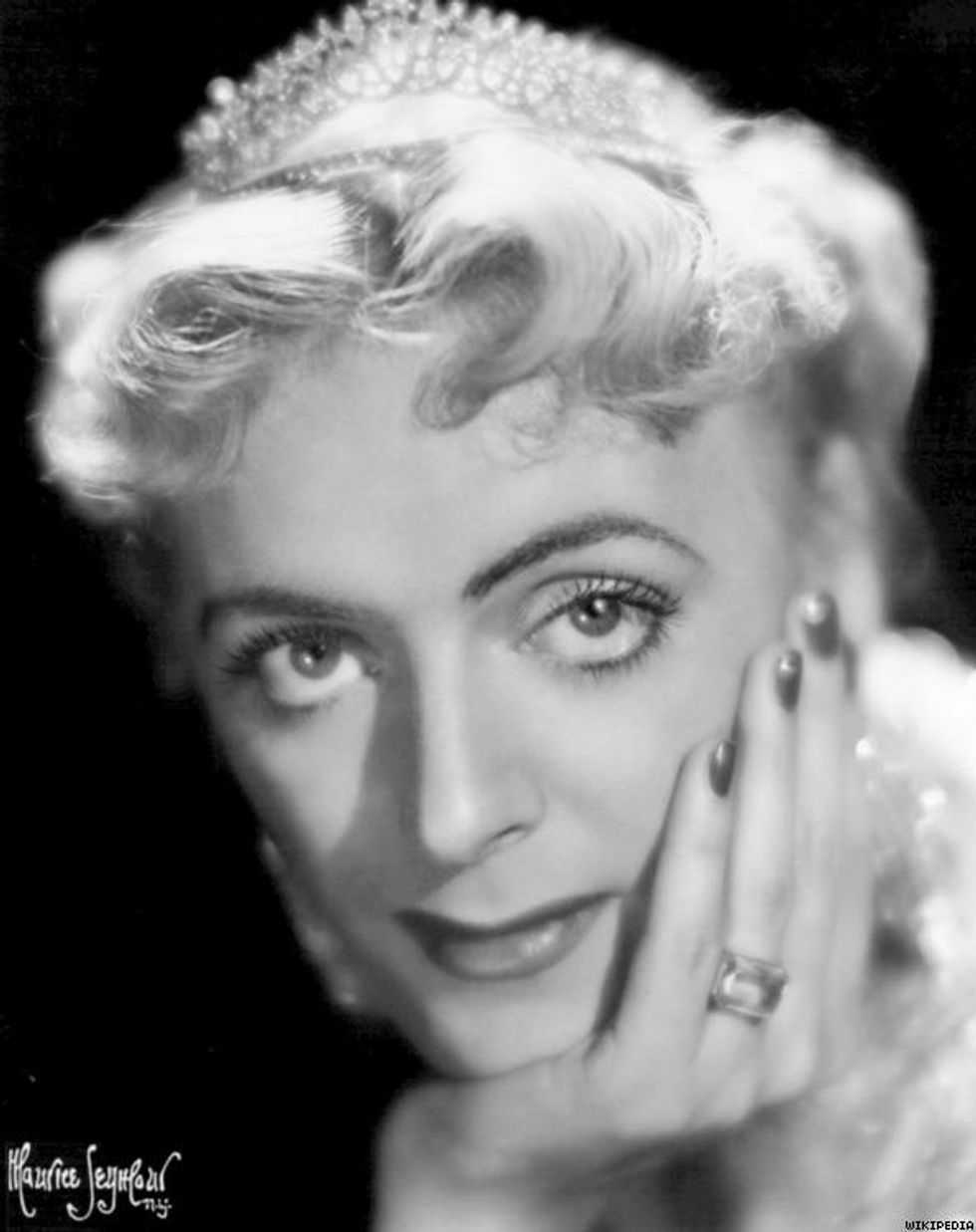
Born in 1926, Christine Jorgensen unwittingly became famous as one of the first women to undergo gender-confirmation surgery. A native New Yorker, Jorgensen showed an early interest in photography, taking classes at the New York Institute of Photography before being drafted into the military in 1945.
Upon her release from the military, Jorgensen sought confirmation surgery in Denmark in 1950, and while she was still in Copenhagen, she became the subject of many newspaper headlines.
Jorgensen launched a nightclub act upon returning to the U.S., saying, "I decided if they wanted to see me, they would have to pay for it," according to The New York Times.
She also became a lecturer and an author. Her autobiography is titled Christine Jorgensen: A Personal Biography.
She died of lung and bladder cancer in 1989.
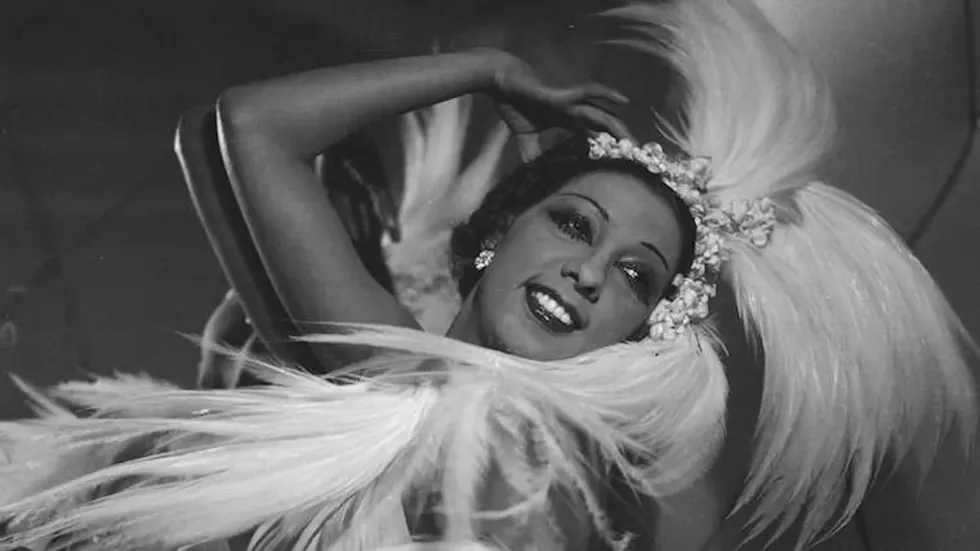
Baker was born to a single mother in St. Louis in 1906. Impoverished, she went to work as a domestic servant while still a child, and she often suffered sexual abuse by the white men who employed her. She had a couple of early marriages but found her calling as a dancer in vaudeville, in nightclubs, and on Broadway, and she enjoyed love affairs with other female performers. Later, her lovers included the French author Colette and the Mexican artist Frida Kahlo. Baker went to Paris to perform in the mid-1920s and quickly became a major star with her sensual dances, sultry singing, and barely-there costumes. There was an element of racial stereotyping in the audience response, as white people had a preconceived notion of Black women as wildly sexual. But she did encounter less racism in Europe than she did in the U.S., and she has been credited with subverting stereotypes.
In the late 1930s, she married Jean Lion, a white Jewish Frenchman, and although the marriage did not last long, she helped him and his relatives flee the Nazis. By then a French citizen, she was a valued member of the anti-Nazi underground during World War II, smuggling documents and assisting in espionage.
After the war, she married Jo Bouillon, another white man -- a musician who was gay. While each had relationships with other people, they lived grandly at a chateau in southern France and adopted 12 children from around the world -- children Baker called her "rainbow tribe." Postwar, she also became more involved in antiracism work, and in 1963 she spoke at the Rev. Martin Luther King Jr.'s March on Washington.
Baker gave her last performance in April 1975 in Paris, then suffered a cerebral hemorrhage the next day and died two days later.